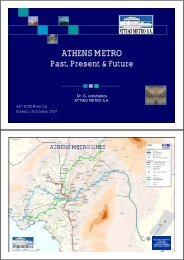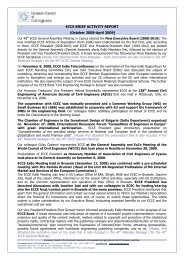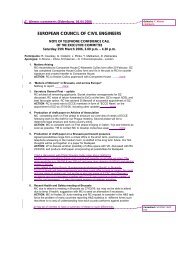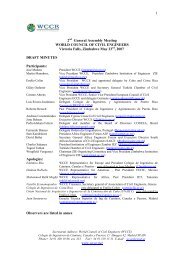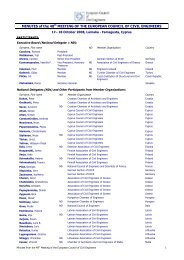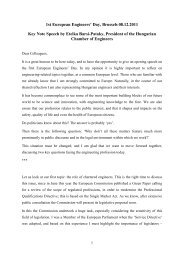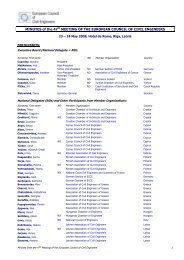A Closer Look at Prevailing Civil Engineering Practice - European ...
A Closer Look at Prevailing Civil Engineering Practice - European ...
A Closer Look at Prevailing Civil Engineering Practice - European ...
You also want an ePaper? Increase the reach of your titles
YUMPU automatically turns print PDFs into web optimized ePapers that Google loves.
A <strong>Closer</strong> <strong>Look</strong> <strong>at</strong> <strong>Prevailing</strong> <strong>Civil</strong> <strong>Engineering</strong> <strong>Practice</strong>, Wh<strong>at</strong>, Why and How<br />
Vincent T. H. CHU<br />
Fig. 1.1 Bending moment envelope in incremental launching<br />
3. Should special design be c<strong>at</strong>ered for in bridge piers upon jacking<br />
up of superstructure for install<strong>at</strong>ion of bearings in incremental<br />
launching method<br />
After the completion of launching process, the superstructure has to be<br />
lifted up to allow for install<strong>at</strong>ion of bearings. This is usually achieved by<br />
means of jacks to raise 5-10mm successively <strong>at</strong> each pier. In fact, it is<br />
anticip<strong>at</strong>ed th<strong>at</strong> no special design is necessary for this oper<strong>at</strong>ion because<br />
the effect of differential settlements <strong>at</strong> support should already be checked<br />
in bridge design. Level readings should be checked to ensure th<strong>at</strong> it does<br />
not devi<strong>at</strong>e from the designed figure.<br />
4. Can the use of temporary nose in incremental launching method<br />
reduce the cantilever moment of superstructure to the value of inner<br />
support moment<br />
When the superstructure is pushed forward, a temporary nose is usually<br />
adopted <strong>at</strong> the front end of the superstructure to reduce the cantilever<br />
moment for which the central prestress is designed. The length of<br />
temporary nose is about 60-65% of bridge span.<br />
The bending moment of self-weight for internal spans (equal span) of long<br />
bridge is -0.0833WL 2 <strong>at</strong> piers and +0.0417W L 2 <strong>at</strong> mid-span (W = unit<br />
weight of deck and L = span length). However, without the use of<br />
temporary nose, the bending moment in the leading pier when the deck<br />
has to cantilever from one pier to another would be -0.5WL 2 , which is 6<br />
5






